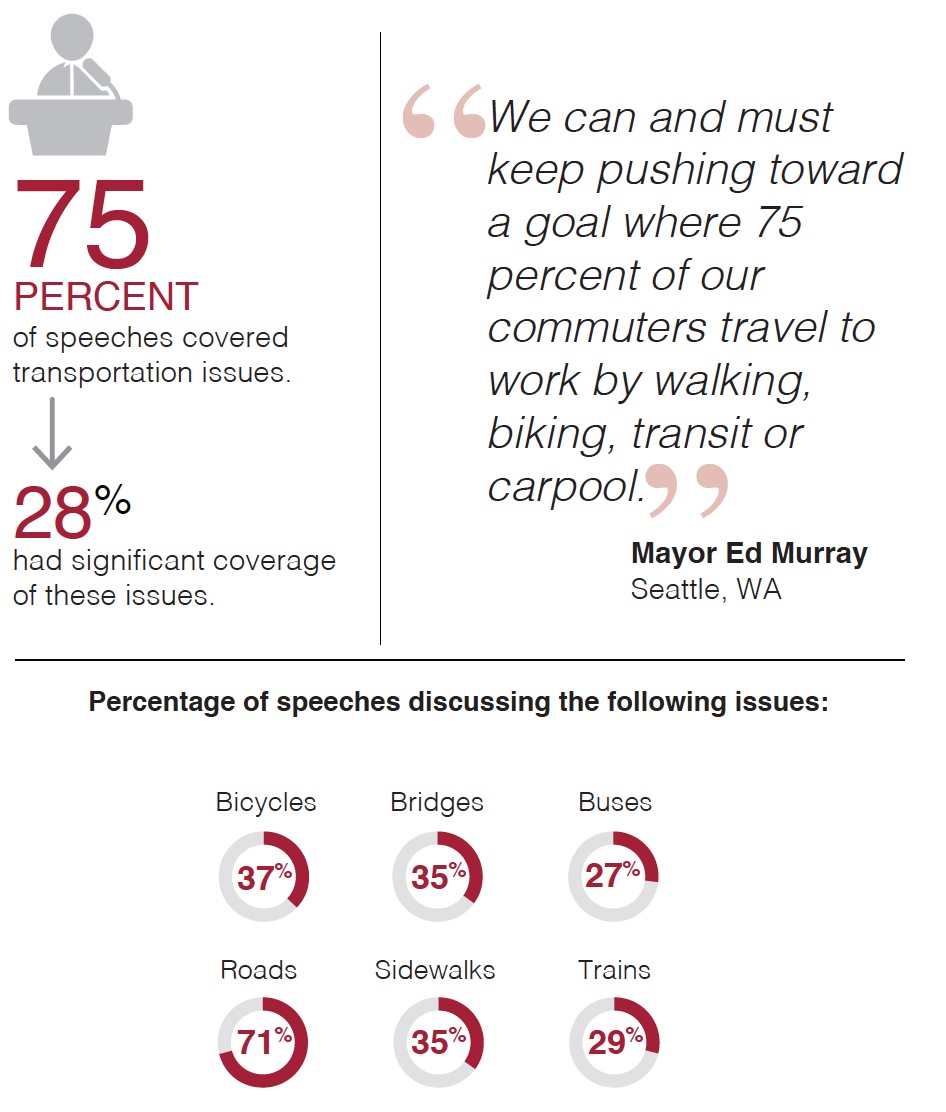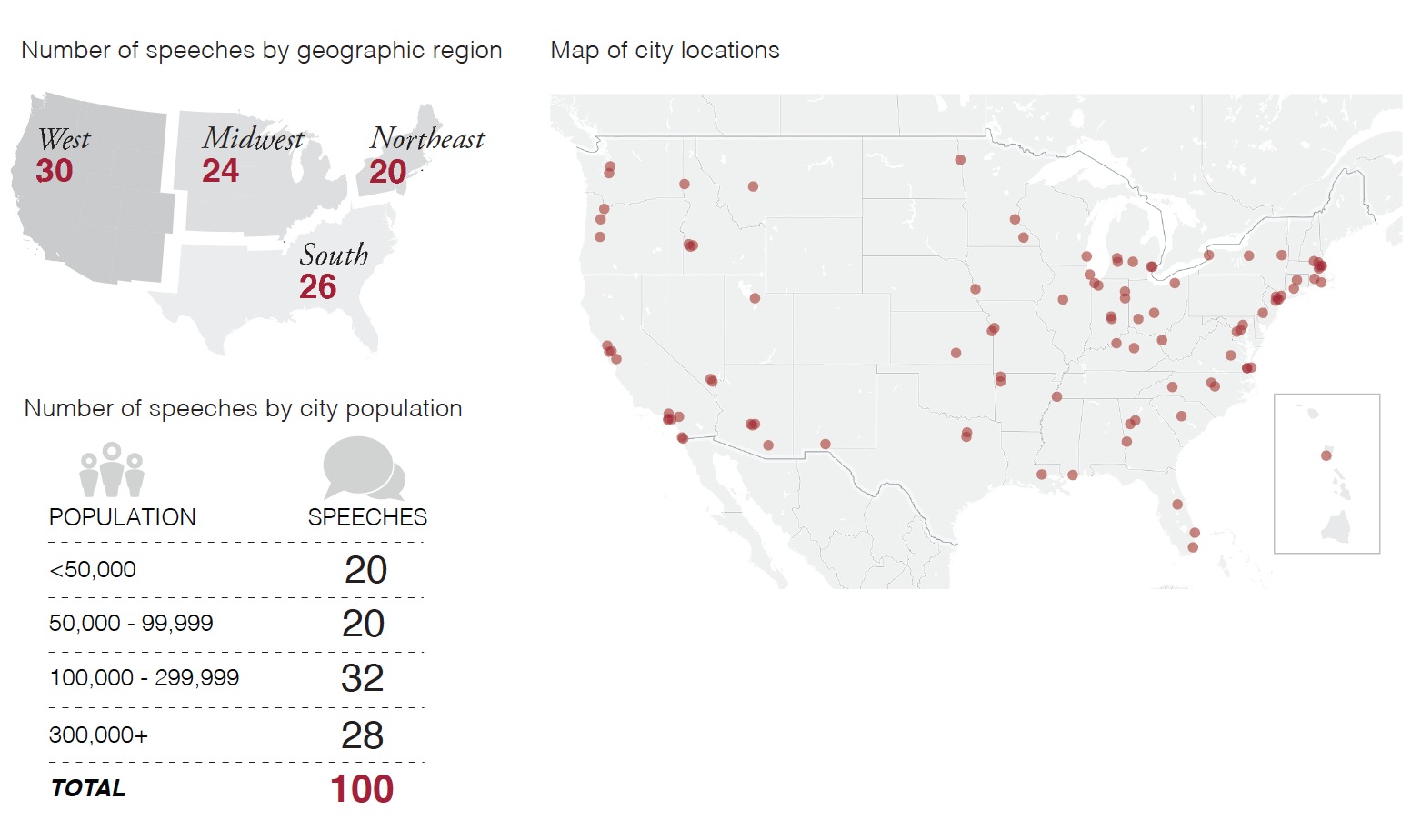NATIONAL LEAGUE OF CITIES
For the first time in human history, the majority of the world’s population (54%) lives in urban areas, including 80 percent of Americans. This number is expected to grow to 66 percent of the world’s population by 2050.2
Increasing population growth in cities not only leads to greater citizen demand on local government but also creates an entire new ecosystem in which local governments must respond and adapt. In a world where the only constant is change, a mayoral focus on future opportunities and challenges is imperative. City leaders need to grapple with and understand how decisions today can help create socially cohesive places years into the future where the benefits of growth enhance quality of life for all residents.
For this reason, the National League of Cities (NLC) is publishing this yearly benchmarking report, State of the Cities, which provides an analysis of trends in cities and the response of local governments based on annual state of the city addresses from mayors across the country. With the growing centrality of cities, our mayoral voices provide a unique window into contemporary conditions and the future direction of our country.
While research has been done on the president’s State of the Union address and on governors’ state of the state speeches, very little analysis has been undertaken of mayoral state of the city speeches.3,4 NLC’s State of the Cities 2014 report is the first in a new endeavor to examine a broad cross-section of these speeches from cities across the country. This year’s baseline report will provide the foundation for annual benchmarking for years to come and offer a valuable tool for assessing trends and strategies.
Key findings from this year’s report:
• Topline issues for the nation’s mayors are jobs and the economy, budget and finance, and public safety.
• Jobs, education and housing are common topics in the speeches of larger city mayors, whereas public safety is the leading priority issue in cities with population below 50,000.
• Transportation issues receive extensive attention from mayors in the West and South, environmental issues from mayors in the West, education from mayors in the Northeast, and housing from mayors in the West and Midwest.
For this report, we conducted a content analysis of 100 state of the city mayoral speeches from cities reflecting a diverse cross-section of population sizes and geographic regions (see Appendix 1 for the complete list of cities, page 17).
…
Transportation
 The movement of people and goods via highways, railways and public- transit systems drives economic growth, directly affects the day-to-day lives of individuals and is central to the well-bring of cities. While transportation projects suffered in the wake of the economic downturn, mayors expressed commitment to restoring transportation investments.
The movement of people and goods via highways, railways and public- transit systems drives economic growth, directly affects the day-to-day lives of individuals and is central to the well-bring of cities. While transportation projects suffered in the wake of the economic downturn, mayors expressed commitment to restoring transportation investments.
Transportation infrastructure was commonly addressed in the speeches covered in our sample. In Providence, Rhode Island, Mayor Angel Taveras proudly noted that a $40 million project to fi x 62 miles of roads in Providence would be completed by the end of the year. For many cities, infrastructure projects form part of a long-term approach to develop multimodal transportation systems. Mayor Kirk Caldwell of Honolulu emphasized the role of multimodal transportation in creating social equity, saying that public transportation “is the great equalizer for the people of our community.”
Bicycles and bike lanes were frequently mentioned as a component of multimodal transportation. Mayor George Heartwell of Grand Rapids, Michigan, said that the city had recently installed 41.6 new miles of bike lanes toward a 2015 goal of 100 miles, while Mayor Caldwell, who devoted over a third of his speech to transportation issues, said that $1.4 million of the upcoming budget was specifi cally devoted to a bike plan and bike lane improvements. In San Diego, Mayor Todd Gloria said that investing in bicycles “makes sense for public health, our environment, reducing traffic congestion and for greater interaction in our neighborhoods,” and he announced a new bike-sharing program.
As city leaders invest more significantly in transportation systems, the notion that transportation is about people, service and sustainability will continue to undergird their decisions.
Download full version (PDF): State of the Cities 2014
About the National League of Cities
www.nlc.org
The National League of Cities (NLC) is dedicated to helping city leaders build better communities. Working in partnership with the 49 state municipal leagues, NLC serves as a resource to and an advocate for the more than 19,000 cities, villages and towns it represents.







 RSS Feed
RSS Feed